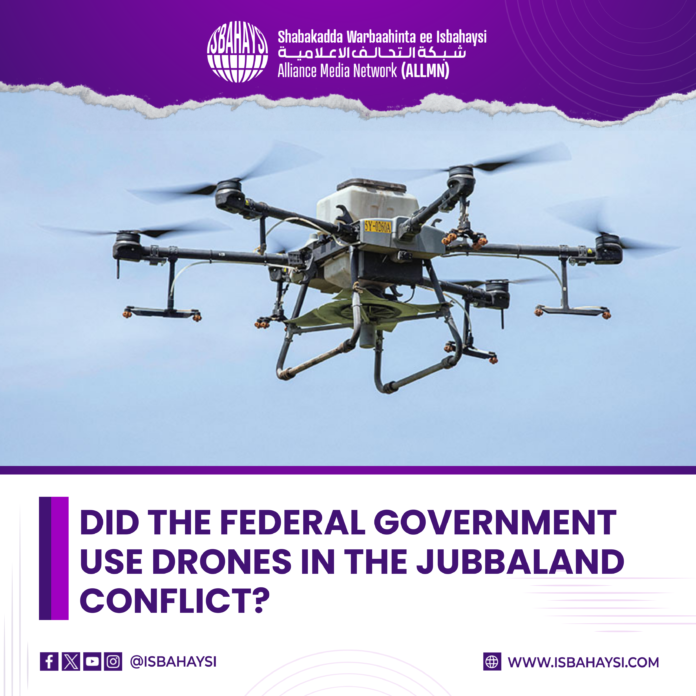Recent developments have shed light on the intense Raaskaanbooni battle that resulted in significant losses for the Somali National Army (SNA). Emerging reports suggest that the Federal Government of Somalia (FGS) may have employed drones, originally intended for civilian use but later modified to carry explosives, during its confrontation with Jubbaland forces.
On the day of the battle, the Deputy Minister of Security for Jubbaland publicly stated that the FGS had used unmanned aerial vehicles (UAVs or drones) to attack Jubbaland forces. Independent sources corroborated this claim, reporting that the drones caused substantial destruction, including the demolition of military vehicles belonging to Jubbaland forces.
Further revelations have come from leaked, among the Federal Government soldiers who surrendered to Kenya was an officer named Cabdisalaam, reportedly affiliated with Somalia’s National Intelligence and Security Agency (NISA). Cabdisalaam is known to have undergone specialized drone training in Turkey, where he acquired skills in converting civilian drones into explosive devices. Allegations indicate that he played a critical role in guiding the drones used by the Federal Government during the battle against Jubbaland forces.
While most of the surrendered Federal Government soldiers were not repatriated, reports suggest that President Hassan Sheikh Mohamud made concerted efforts to secure the release of Cabdisalaam. On the day before his return, Cabdisalaam was flown back to Mogadishu, arriving at Aden Adde International Airport.
The Jubbaland administration, which seized some of the drones and related equipment during the Battle of Raaskaanbooni, has demanded that Cabdisalaam be handed over to them. However, despite their appeals, Kenyan authorities, under pressure from the Federal Government, allowed Cabdisalaam to be repatriated to Mogadishu. The Federal Government’s insistence on Cabdisalaam’s return has fueled speculation about his strategic importance to ongoing military operations or the possibility of personal connections, as it is alleged that President Hassan and Cabdisalaam share familial ties.
This incident marks a significant and alarming shift in the nature of Somalia’s internal conflicts. It is the first reported instance of drones being used in inter-Somali warfare in the country’s 30-year civil strife. The use of drones, particularly those carrying explosive payloads, introduces a new and perilous dynamic to the ongoing power struggles.
In recent years, the role of drones in modern warfare has expanded, as witnessed in conflicts in Ukraine and the Middle East. Inexpensive, small, and easily modifiable, drones have been used to carry out airstrikes or self-detonate, inflicting considerable damage on military equipment worth millions of dollars and destroying vital military installations. The Raaskaanbooni incident signifies that this method of warfare may now be part of Somalia’s internal power struggles, with potentially far-reaching consequences for regional security and stability.






